|
present Book Reviews For Amateur & Avocational Archaeologists |
 |
|
present Book Reviews For Amateur & Avocational Archaeologists |
 |
Archaeological
Field Methods,Techniques & Theory
|
| Home | Gallery | Latest Finds | Back to Main Book Review Index |
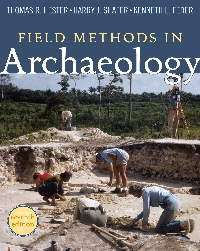
|
Field
Methods In
Archaeology by Thomas R. Hester, Harry J. Shafer, Kenneth L. Feder Left Coast Press 2008 (1997) Seventh ed. ISBN# 978-1-59874-428-6 paperback If you think that learning the methods professional archaeologists use in the field is difficult, or beyond your abilities, then read this book--> it will change your mind! Progression from mere "collector of things" toward doing true archaeology has never been made easier than through the reading of this text and careful practice of the techniques illustrated therein. Books of this kind are terribly difficult to locate and this is a MUST-HAVE book, actually a tool, that will serve you a long time! Left Coast Press is to be congratulated for keeping this formerly hard-to-find book in print. This book's authors do a great job summarizing the logic of methodology by showing how archaeology has evolved as a discipline. The first two chapters will open your eyes to just what an archaeologist does, and you will come to understand the historical and prevailing points of view that make up modern archaeology. You might be surprised to find out that you didn't know much about the topic! The authors go to great lengths to point out the valuable assistance that amateurs and avocationalists have lent to Archaeology over its history while pointing out that the "public needs to be cured of its infatuation with the "mystical" side of archaeology." After reading chapters 3 through 6, you'll be chomping at the bit to get out into the field and try your hand at everything in them! But wait, read the rest of the book! Every collector out there needs to read the chapter on Handling and Conservation of Artifacts. The later chapters on mapping are fantastic and cleared up all of my nagging questions about what is, at first, surely the hardest part of doing archaeology. The Handbook makes it clear that it is in the laboratory, doing a lot of tedious counting, measuring and analysis, where a huge part of doing archaeology takes place. I've near worn out my copy, referring to it constantly to answer on-the-fly questions in the field, and the nearly 100 page Appendix, with it's excellent conversion charts and awesome bibliography will never outlive its usefulness to me. Perhaps the best summary I can leave
you with
was written by Tom Hester in the book's introduction: Once again, three cheers for
Left Coast Press! Their reissue ends the mostly frustrating hunt for a
decent copy! Instead of paying $88.00 for a
used copy, go here and
pick
up
a
brand-spanking new copy of the Seventh Edition for $69.00...
an invaluable reference!! reviewed
by
Bob
Wishoff
|
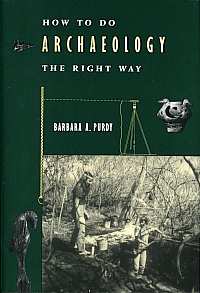
|
How To Do
Archaeology The Right
Way by Barbara R. Purdy University Press of Florida 1996 First ed. ISBN# 0-8130-1392-5 cloth hardcover Written with particular focus on Florida, the author, in non-technical language, directs the general public and others as to the particular conditions for general archaeological investigation in the region. This book, while not as in-depth as the Hester textbook on the topic, nonetheless gives the avocationalist answers to a whole slew of questions about archaeological excavation techniques. The author spends a great deal of time explaining the laws (permit acquisitions), strategies for mapping, testing, fund-raising, basically all aspects of controlled methods for researching sites. In addition, there are informative chapters relating to the archaeological history of Florida and an excellent Glossary of archaeological terms. The book is copiously illustrated and annotated, giving the amateur or avocationalist in Florida, and elsewhere, an excellent reference for future inquiry into the topic. Easier to locate, and cheaper to own
than a
lot of excavation overviews, you can order this book direct from the
publisher
by clicking here.
The
book
retails
for $29.95. While on the website, note the other
interesting
books by this author, as well as a large selection of books on both
anthropology
and archaeology-related topics. reviewed
by
Bob
Wishoff
|


|
Munsell
Soil Color
Charts Book Year 2000 Revised Washable Edition gretagmacbeth looseleaf 6-hole binder Not really a book in the usual sense of the word, the Munsell Soil Charts Book is actually an indespensible tool used in the field to exactly describe the color and texture of soils and sediments, important pieces of information to any archaeologist. Occupational materials are always found in some kind of matrix, soil or sediment, the genesis of which must be explained, since materials could have been shifted over time by the changing landscape, for example. Soil/sediment colors can help determine the entire geohistory of the materials in which occupations are buried. The colors can also be used to determine arability and other cultural, variable activities of the site's occupants over time. The Charts were developed with cooperation from the U.S. Soil Conservation Service for classifying soil colors into precise international standards free of ambiguous color terms such as "lemon yellow" and "chocolate brown." The introductory section of the Chart Book clearly explains basic color properties as well as how to use the Charts. Hue, Value and Chroma are used to describe colors. Hue is where the color is within the spectrum (how red or yellow or blue it is). It has lightness and darkness Values with zero being white. Chroma identifies how much color there is, from very faded to very colorful. Munsell charts are designed to be used for moist samples viewed in natural sunlight. The moist sample requirement is important as dry samples will affect Chroma and Value. To use the chart, the researcher holds the sample underneath the page that is likely to have the correct Hue. Next, compare the sample to individual color tiles until the best match is reached. If contrast makes the comparison difficult, use the appropriate supplied mask to isolate 4 tiles of a page at a time over the sample. Recording the Hue, Value and Chroma gives you this type of result: 5YR 3/3 (Hue of 5 yellow-red, Value of 3, Chroma of 3). If you need to describe a color in words, you simply consult the name chart opposite the page with the matching colored tile (see illustrations of each page type on left). Whether or not you already own a Munsell Soil Charts Book you'll appreciate the new 2000 Washable Edition. Not only is it composed of waterproof pages, which is absolutely wonderful, but there are a lot more colors in almost all of the ranges. All total there are over 322 mounted color chips. There are a total of eleven index-tabbed charts: 10R, 2.5YR, 5YR, 7.5YR, 10YR, 2.5Y, and 5Y, plus two Gley (blue and green, as well as a gray scale for submerged soils). Comes with two washable black and gray masks to help with contrast issues in the field. There also included charts for matching Granular and Crumb Structures, Platy Structures, Blocky Structures, Prismatic and Columnar Structures, as well as proportion estimate charts for mottles and fragments within the matrix. In addition to its intended use, the Munsell Soil Color Charts can be used for a wide range of color-matching uses from pottery and rocks to skin, hair and eye color. Under typical use, it is recommended that you replace your Munsell Color Charts every 2 years to ensure correct color identification as they could slightly fade from repeated exposure to sunlight. Not inexpensive, but this is a tool
you will
use every day in the field. reviewed
by
Bob
Wishoff
|
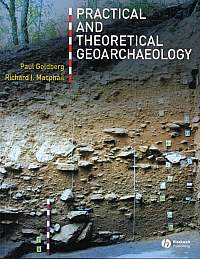
|
Practical
and
Theoretical Geoarchaeology by Paul Goldberg and Richard I. Macphail Blackwell Publishing 2006 First ed. ISBN# 0-632-06044-1 paperback Before radiocarbon analysis, investigating the geology of a location might have been the only “sure” method of dating an archaeological site. Analysis of a site’s geology is still important for determining chronology, but geoarchaeology is fast becoming one of the most important factors in describing and ascertaining much more about archaeological sites. Authors Goldberg and Macphail lament that archaeologists are not always as proficient at geology as they should be, even misusing terms such as “soil” to describe what should be called “sediment” in their publications. Practical and Theoretical Geoarchaeology is described as a textbook for undergraduate archaeology majors, a basic text which can act as an intermediary course in geoarchaeology. Why would an amateur or avocationalist need to read it? Because any knowledge about landforms and the precious deposits which support archaeological materials is going to help you understand why a site is located where it is, what went on at a site, and how the site was formed. I found that reading the book while sitting next to a pc was very useful. Each time I encountered a term or concept I didn’t understand, one which was presented within a discussion but with no explanation, I'd just Google the term and generally find enough information to gain understanding enough to return to the text. Using the web with a textbook will free you to challenge yourself with topics such as geoarchaeology--- don’t fear this topic, it’s truly interesting and within your grasp. The authors of this book do a fantastic job explaining complex ideas, frequently using key sites to show how geoarchaeology was critical in understanding the full story of what went on there. The book seeks to be practical in its scope, to show directly how geoarchaeology is relevant to all archaeological research strategies and interpretations. The first section of the book introduces the student to regional scale geoarchaeology. We look first at defining and examining what sediments are, then stratigraphy and soil. Once this basic level of understanding is achieved, considerable time is spent examining hydrological systems effect on landscapes: water runoff down slopes and such, and how rivers meander and lakes come and go. Naturally, before you are through you will also explore wind effects (aeolian) and desert environments. Coastlines are a chapter all to themselves, as are caves/rockshelters. If you find you are getting a shift in your perspective of things, then you are getting into it. The earth is "alive" with process, and anyone looking for things within it, must consider its past and present life! It is very interesting to see how science explains landscape, something some folks have an intuitive feel for, but lack any means to communicate. Geologic events affect the cultures you wish to study. Understanding the landscape, knowing what could occur in various events, and what to look for in the geologic record will better help you understand the cultural artifacts you find beneath your feet. “Geoarchaeology has traditionally been practiced at the landscape/geomorphic and site level, concentrating on site chronologies and regional correlations; less emphasis was placed on the significance of individual strata at the microscale.” Basically, are the larger concepts seen in landform morphologies applicable to say, the stratigraphy in a two square meter section of the wall of a pit? Can we infer other information, such as changes made by people? Chapters such as “Human impact on landscape; forest clearance, soil modifications, and cultivation”, “Occupation Deposits”, and “Human Materials” are absolutely fascinating. I had never really considered how “dark earth” is formed, or thought about the components of urban stratigraphy and their potential for weathering or any of a hundred other things presented here. Field-based and laboratory methods, as well as reporting and publishing round out the book and are explored in detail. The authors are critical of most research publications for the lack of geoarchaeological depth reported in them, and suggests changes in field documentation. The extensive bibliography is something else you will appreciate. Having read, but not studied this book within a classroom situation, I’m certainly not presenting this review as an expert. Having said that,I like to be challenged with new ideas, and these authors accomplish that by making their topic relevant and approachable. Anyone seriously interested in archaeology needs a copy of this book in their library. Practical and Theoretical
Geoarchaeology
is might not show up at your local bookstore, so order it direct from
the
publisher, for $64.95, by clicking here.
reviewed
by
Bob
Wishoff
|
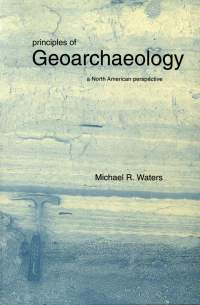
|
Principles
of
Geoarchaeology:
A North American Perspective by Michael R. Waters University of Arizona Press 2004 5th ed. ISBN# 0-8165-1770-3 paperback Avocational archaeology is about context as much as it is about artifacts, and the field of geoarchaeology helps develop a fuller understanding of the context in which artifacts are discovered. Understanding this geological groundwork is an essential instrument in the intellectual toolbox brought to a site, and learning the basic principles greatly repays the effort required. This book is used as a text in university level courses on geoarchaeology, and is not a simple or easy read. It does, however, expand greatly on many concepts that the avocationalist intuitively encounters and broadens them to encompass the sweep of time across terrain and the traces of human existence left behind. After opening with an overview of the growth of geoarchaeology as a field of study, the basic foundations of the “three S’s” are established. Soil, Sediment, and Stratigraphy are the essential elements of the environmental matrix in which artifacts are found, helping to reveal “the dynamic relationship between the landscape and human behavior, and between landscape processes and the archaeological record.” Detailed explanation of these processes affecting deposition of artifacts is concluded with a very useful chapter on turbination phenomena which continue to disturb archaeological contexts after they are laid down. The avocationalist will recognize many of the geomorphic processes encountered in archaeology. Waters devotes a number of chapters to discussing them at length, and the extensive of use of diagrams elucidates a more intuitive comprehension of many processes that evade a ready verbal description. Since this volume lacks a glossary and relies on an archaeology student’s generally strong background in geology, the casual reader needs to pay careful attention to highly specialized terminology as it arises; however the index is useful in leading one back to the needed definitions. Descriptions of specific geoarchaeological applications make clear how theoretical models have developed, and the book has illustrations and photographs from field studies which demonstrate the significance of theory in practical applications within site interpretations. The studies cited are all North American, with a large portion from the Southwest, but ranging from Alaska to South Carolina. This is a book that any serious
avocationalist
should add to their library as a text to be studied. Material
that
seems dense and of little immediate use will over time will offer
insights
leading to a deeper understanding of time’s conspiratorial role with
geology
in shaping the archaeological environment. It is available from
the
University of Arizona Press in soft cover (398 pp) from their website here
for $27.95. reviewed
by
Charles
Swenson
|
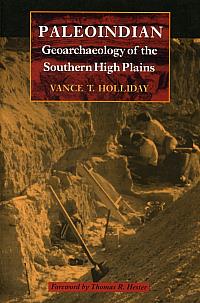
|
Paleoindian
Geoarchaeology
of
the
Southern High Plains by Vance Holliday University of Texas Press 1997 1st ed. ISBN# 0-292-73114-0 paperback The older a site you find, the more its' geological history becomes relevant. You might find that there are younger strata which has, over time, folded itself into an older matrix, for example. Without a thorough knowledge of the site's geomorphology, this would be most puzzling to find. In later stages of research, an archaeologist seeks to make broader statements about the nature of places where paleoindians settled, hunted, or did other activities. It is within this scope that Vance Holliday put together this comparison of paleoindian sites, examining not only what was found and where on paleolithic sites, but how these locations' geomorphologies compare to each other. In 1952, E. H. Sellars published a study entitled Early Man in America which, since the author was a geologist, described sites within their geological contexts. What Holliday does is update considerably this older publication, still using some data from the Sellars original, but adding to it the embodiment of all of the latest site excavation data and new technologies and understanding of geoarchaeological methods, focusing on sites within the Southern High Plains (NW Texas & E. New Mexico). In addition to comparing stratigraphy, soils and geochronology (more than 1/3 of the book with twenty sites covered in depth), and making regional comparisons, this book is an incredible summary of all aspects of what is known generally about paleoindians in the Southern High Plains. Thomas R. Hester, writes, in his introduction to the book, that "... many archaeologists and certainly students of archaeology, both avocational and professionals-in-training, will seek out the summaries of the major paleoindian sites, some of them the best known in the Western Hemisphere." The "Discussion and Conclusions" section is decidedly worth a read as the author summarizes comparisons between the Northern and Southern Plains. There are nearly forty pages of references which are also great resources for further inquiry by the reader. This book is a classic and should be in your library. Paleoindian Geoarchaeology of the
Southern
High Plains is but one volume of the Texas
Archaeology
and
Ethnohistory
Series, edited by Thomas R. Hester and
published by the University of Texas Press. It can be ordered direct
from
the publisher, for a special online price of $16.72, by clicking here.
The Texas Archaeology and Ethnohistory Series can be seen in
its
entirety here.
reviewed
by
Bob
Wishoff
|
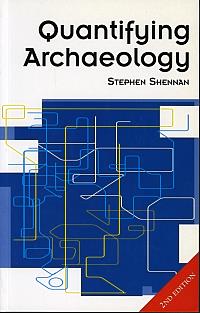
|
Quantifying
Archaeology by Stephan Shennan University of Iowa Press 1997 2nd ed. ISBN# 0-87745-598-8 paperback Several of my friends, usually interested in nearly every book I’ve reviewed so far, recoiled in obvious horror when they picked up this book off my desk. Statistics is not the sexiest of subjects for most people, much less avocational, amateur and student archaeologists, none of whom are as the author puts it “mathematically inclined.” However, this book, while it may not turn you into a statistician, might make you rethink your total avoidance of the topic. Right from the start, I like this author’s coaching: “… in many ways specific skills are less important than some more general attitudes the book aims to put across. The first of these is a knowledgeably sceptical attitude to the results of quantitative analyses rather than a “knee-jerk” acceptance or rejection on the basis of uninformed prejudice. The second is a feel for the way in which archaeological questions can be translated into quantitative terms. The third is a basis of knowledge for talking to statisticians about data analysis problems.” Wow, he makes it sound so easy! And, you know, it’s not the math involved that is the challenge, but the interpretation of the resulting analysis from differing methods of sorting, charting and tabling data which takes some thought. By drawing on archaeological experiences for each and every section in the book, and in the exercises at chapters’ end, this book is clearly not statistics as it’s usually taught, and so it manages to hold your interest throughout. Now, I’m not going to go through each chapter with you, but I can say that several topics, when placed within archaeological contexts are downright interesting. Significance testing, for example, is not something you are going to find explained just anywhere, but would seem to have many merits when trying to decide whether, for example, the distribution of materials found among the wealthy and poor are significant--- ie, can class be determined by the artifact count alone? Gathering data is the most important function of field studies, but who is to determine what data sets are important, or how to draw conclusions from particular sets of raw data? Chi-sqared tests and tests of association of data are also explained--- most of this you are likely to have never considered before even if you have had some math background. there's tons of examples of practical use of statistics for the field archaeologist in this book. I hadn’t looked at any statistics problems since my sophomore year in college, over 30 years ago, and when I took the GRE, I slogged through the problems, dreading their appearance on the test (you know, those marble draw problems… arghhh), but I actually enjoyed browsing through this book, stopping here and there to get enough of a grasp of the topic and its presentation to write this review. This is one textbook I’ve vowed I’ll voluntarily study through on my own. I chalk it up entirely to the author’s unique methods of explanation, involving me mentally with problems I’m likely to actually run across in my work. Quit overlooking the more “difficult” subjects in archaeological research! This is a book you will not only understand, but likely will use! The only thing it lacks, which the independent student would appreciate, is an answer key to the exersises with discussion of the answers. Order Quantifying
Archaeology direct from the publisher, for
$34.95, by clicking here.
reviewed
by
Bob
Wishoff
|

|
Space and
Spatial
Analysis in
Archaeology Edited by Elizabeth C. Robertson, Jeffrey D. Seibert, Deepika C. Fernandez, and Marc U. Zender University of Calgary Press/University of New Mexico Press 2006 1st ed. ISBN# 1-55238-168-4 paperback If archaeology is about anything, it’s certainly partly about the spatial relationships of things. All excavations map out finds in three dimensions. Sites are surveyed and analysed with GIS. Most every journal publication and book about any culture has some mention of how a culture viewed its surroundings and the effect this had on them, yet this is the only book I could find which exclusively covered this topic. Containing thirty-seven papers, the book’s title is that of the Conference, held at the University of Calgary, where they were originally presented in 2002—at least that’s what it says on the inside of the book, back of the cover page… but strangely, the Introduction and back of the book claim the papers were developed from those presented at an earlier conference entitled “2001 Chacmool Conference: An Odyssey of Space.” Whichever conference these papers were presented, we are fortunate that they have been made available in this book. Quoting Jeffery Seibert from the Introduction: “One of the attractive aspects of a conference organized around this theme is that space, both as a theoretical and methodological concern, is not constrained by any of the grand theoretical paradigms or meta-narratives of the social sciences or… ‘High Theory.’ Spatial analyses and approaches to space in archaeology are instead… ‘Middle Theory,” because it attempts to explain and account for patterning in the archaeological record. In short, spatial analysis is relevant to scholars pusuing all sorts of ‘higher level’ theoretical questions, insofar as the spatial analysis of archaeological materials allows for the generalizations to be drawn that fuel the higher level theoretical inferences.” The papers cover a whole range of methodologies, many of them being new ways of looking at spatial problems. Quoting Siebert, “Many of these newer approaches to archaeology represent a departure from the logico-positivist approaches of the processualists to spatial archaeology and introduce a much more interpretive aspect to the whole endeavour.” Titles of some of the papers are every bit as intriguing a read as they sound: “Who Put the ‘Haram’ in the Mahram Bilqis?”, “The Symbolic Space of the Ancient Maya Sweatbath” (I didn’t know the Maya had sweatbaths), and “’What You See is Where You Are’: An Examination of Native North American Place Names” are just a few of the offered selections. Examinations of spaces from around the planet are discussed from every sort of perspective. The book breaks down the topic into eight areas: Theoretical and Conceptual Approaches, Intrasite Spatial Analysis, Architectural Complexes, Urban spaces and Cityscapes, Landscapes and Natural Environment, In Transit: The Archaeology of Transportation, Textual and Iconographic Approaches, and Framework for the Future. Reading this book just might make you look at sites differently. It provides models and methods which should inspire new research. This is the kind of topic nearly everyone should firther investigate. Space and Spatial Analysis in Archaeology can be ordered direct from the publisher, for $49.95, by clicking here. reviewed
by
Bob
Wishoff
|
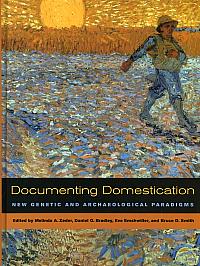
|
Documenting
Domestication New Genetic and Archaeological Paradigms Edited by Melinda A. Zeder, Daniel G. Bradley, Eve Emshwiller & Bruce D. Smith University of California Press 2006 1st ed. ISBN# 0-520-24638-1 hardback One of the most fascinating books I’ve read in awhile, very well written so that despite the complexity of the topic made remarkably easy to grasp, though perhaps not completely understood (I fear, this was mostly due to this reviewer's ignorance of the topic.) I know each and every one of my readers has wondered about the origin of some of the things we take for granted: maize and pigs, horses and dogs and other domesticates. This volume shows very clearly the close association of genetic research and archaeology needed to answer these questions. I liked the way the editors of the
book introduce
the material: Domestication was also the focus of the first scientifically oriented archaeological investigations with Raphael Pumpelly’s turn-of-the-century excavations, at the site of Anau in Turkmenistan, that tested his theories about the role of climate change in the emergence of agriculture (Pumpelly 1905). Pumpelly’s work on agricultural origins was to have a profound influence on the later work of V. Gordon Childe, who argued that agricultural origins represented one of the two great transforming revolutions in human history (Childe 1951). The interdisciplinary investigations of Robert Braidwood in the Fertile Crescent and Richard MacNeish in Central Mexico in the 1950s and 1960s built on this legacy, and they set the precedent of bringing together researchers from diverse disciplines of botany, zoology, geology, and archaeology to jointly explore fundamental questions of when, where, how, and why humans made the transition from hunting and gathering to herding and farming. The origin of plant and animal domestication has remained among the “big questions” of archaeological inquiry ever since.” And this book certainly deals with those “big questions”, breaking the subject up into what the editors call “The Four-Celled Matrix for This Volume.” The four “cells” consist of: Archaeological Documentation of Plant Domestication; Archaeological Documentation of Animal Domestication; Genetic Documentation of Plant Domestication; and, Genetic Documentation of Animal Domestication. The introduction spends some time explaining the overall approach of each cell and are quite interesting and effective at setting the stage for the 23 remaining papers/chapters. This book illustrates the state-of-the-art of genetic and archaeological research in plant and animal domestication. I can find no other book which covers the topic so completely and with such great clarity. Order Documenting Domestication direct from the publisher, for $70.00 (hardback), by clicking here. Interestingly, a Downloadable
eBook
version of the book is available at Adobe
E-Reader at ebooks.com for only $15.95. reviewed
by
Bob
Wishoff
|
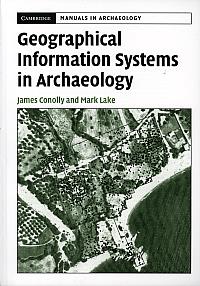
|
Geographical
Information
Systems
in
Archaeology By James Conolly & Mark Lake Cambridge University Press 2006 1st ed. ISDN# 0-521-79744-6 paperback Archaeological Geographical Information Systems (GIS) are quickly becoming ubiquitous tools for researchers. But like a lot of tools we use, many times there’s not a lot of understanding as to how these tools work--- we use them and trust there are no inherent problems with their usage or in the interpretation or representation of important data. Unfortunately, use of GIS does pose some problems of its own and for a long time remained a tool for experts only who “in the eyes of cynics—chose their archaeological case studies solely to illustrate solutions” to those problems. The authors of this in-depth manual for GIS state that “ the widespread adoption of GIS brings with it several attendant dangers. The most problematic is that modern GIS packages offer users a variety of powerful tools that are easily applied, without providing much guidance on their appropriateness for the data or questions at hand. For example, many current GIS software packages require just a few mouse clicks to create an elevationmodel from a set of contour lines, but none that we know of would warn that the application of this method to widely spaced contours is likely to produce highly unsatisfactory results that could lead to a host of interpretive errors further down the line. Conversely, there is a risk that researchers who become overdependent on the data management abilities of GIS may shy away from tackling more analytical questions simply because it is not immediately obvious which buttons to push. It is our ambition that no archaeologist who keeps this manual near his or her computer will make such mistakes, nor be hesitant about tackling the sorts of questions that can only be answered with some of the more advanced tools that GIS packages offer.” The authors are not content to just explain “how” to do things, but also clarify “why” things should be done. The manual is not designed to be read from cover to cover, but as an aid to work in-progress, used to look up specific ideas, terms and strategies. However, the authors explain, “we have tried to maintain a logical progression such that topics are introduced in roughly the order that they might be encountered in the course of developing and using an archaeological GIS.” I think this is one of the book’s strengths in that even with a total lack of knowledge of GIS, a researcher could use this book in a productive fashion by first reading the First Principles, and Putting GIS to Work in Archaeology chapters, and thus getting a rather thorough background in what-it’s-all-about before proceeding further. There is no stone unturned here--- the manual contains sections for nearly every conceivable use of GIS, and each chapter illustrates the whys and how-tos in clear language with plenty of illustrations and supporting charts. A fifteen page glossary makes it all the easier to parse what can sometimes be pretty dense technical language. And, don’t store away those manuals that came with your software, because although the authors illustrate points and describe the how-tos from most of the major software packages, they declare that in no way, could every single package-specific problem be possibly dealt with, or foreseen for inclusion in this book. Those who routinely use Total Stations will appreciate the chapters on Building Surface Models and Digital Elevation Models (DEMs). DEMs, especially, have become critical datasets, yet most researchers do not understand how to assure proper error-free interpolations. In analyzing regions, this manual provides good definitions of concepts such as intervisiblility as well as the various types of viewsheds in order to understand the various issues in visibility analysis and how they are affected by, and how they affect, reciprocity, edge effects, DEM quality and sensitivity, to mention a few. In short, Geographical Information Systems in Archaeology, looks to be an invaluable tool for both the novice and the experienced professional who seeks a better understanding of this important research tool. This manual is but one of a series of handbooks “designed for an international audience of upper-level undergraduate and graduate students, and professional archaeologists and archaeological scientists in universities, museums, research laboratories and field units." Geographical Information Systems in Archaeology can be ordered direct from the publishers, for $45.00, by clicking here. The entire selection of available
manuals from
the Cambridge Manuals in Archaeology
series
can be found here.
reviewed
by
Bob
Wishoff
|

|
The Ethics
of
Collecting Cultural
Property Edited by Phyllis Mauch Messenger University of New Mexico Press 2003 2nd ed., 2nd printing ISBN# 0-8263-2125-9 paperback There’s not one single person who is reading this review who would not benefit from reading this book. In its second edition, the original book has become a standard used in classrooms across the globe, for in no other book do parties as diverse discuss the issue from so many relevant viewpoints. The ethics of collecting artifacts are extremely complicated and the editor has distinguishes all sides of the issue as “The 3 R’s”: “The 3 R’s are claims concerning the restitution of cultural properties to their countries of origin, the restriction of imports and exports of cultural properties, and the rights (e.g., rights of ownership, rights of access, rights of inheritance) retained by relevant parties.” Messenger further states, “Typically, these claims conceive the debate over ‘cultural properties’ as a debate over ownership of the past, where ‘the past’ is understood not only as the physical remains of the past (e.g., artifacts, places, monuments, archaeological sites) but also “the perceptions of the past itself” (e.g., information, myths, and stories used in reconstructing and transmitting the past)… Many of these questions turn on how one answers the question ‘Who owns the past?’ Three sorts of alternative and competing answers are given: (1)’Everyone owns the past;’ since the past is the common heritage of all; it is ‘humanity’s past;’ (2)’Some specific group (e.g., indigenous peoples, scholars, collectors, museums, nations) owns the past,’ since that group speaks for or represents the important values that are at stake in the debate over cultural properties; and (3) ‘No one owns the past,’ since the past is not really the sort of thing that is ownable.” So, who “owns the past”, much less ”perceptions of the past”? You will read this book and likely side against the dealers and museums. There’s a definite bias against their ownership within the scope of the arguments, but it’s hard to argue with some of the cases presented because significant artifacts were blatantly smuggled out of countries and offered up for sale to wealthy collectors. But what of the ordinary collector of arrowpoints, or salvager of lithics? What of the “small-time” collector who buys a few points at a local artifact show? Other than mention of the fact that the main UNESCO agreement does not include arrowheads, there’s little focused reference to the average person who collects artifacts. However, the reader will infer that the average person is just another degree of the greedy collector who would smuggle or buy a more costly and important article. Only toward the end of the book, with the round table, do we read of the problems with dealing with the “ordinary” or unexceptional artifact which does not represent a culture’s identity and represents no significant loss of information. You are in there somewhere, trust me, keep reading! Don’t be mislead here, the issue’s emphasis is not on archaeology’s “right” to collect data. There’s much more emphasis on cultural origin and that culture or nation’s right to possess their artifacts and sites. But what does one do when the nation or culture is unable to properly curate items? Sheesh, the problems winds round and round and round. Is there a simple answer to “Who owns the past?” In light of the out and out destruction of sites through ranch, farm and public works projects, ethics needs to be an issue revisited over and over again in order to keep up with reality. Buy this book for yourself, and pick up copies for your friends. Start talking about this important issue! Order The
Ethics
of
Collecting
Cultural
Property direct
from
the publisher, for $22.95, by clicking here. reviewed
by
Bob
Wishoff
|

|
In Pursuit
of The
Past Decoding the Archaeological Record By Lewis R. Binford University of California Press 2002 1st paperback ed. ISDN# 0-520-23339-5 Colin Renfrew, a noted and important archaeologist himself (Disney Professor of Archaeology at the University of Cambridge since 1981, and more recently Director of the McDonald Institute for Archaeological Research), has this to say about the author of this book: “The work of Lewis Binford establishes him as the outstanding archaeological thinker of our time. His influence, as the senior and most original figure in the intellectual developments of the 1960’s which came to be called the ‘New Archaeology’, has arguably been greater than that of any other writer this century concerned with the understanding of man’s early past.” Who could resist reading a book by such an author? First published in 1983, and reissued in paperback by the University of California Press in 2002, this book is a compilation of lectures and classes Binford presented to lucky audiences across Europe in 1980. How fortunate we are that the lectures were taped, because what Binford has to say is remarkable and interesting as hell to anyone who ever attempted to understand the workings of a prehistoric site. Binford is so very readable! I enjoyed every single lecture presented, even read some of them two or three times, for his insight into the topics is impossible to miss. Does “discovery” alone merit an archaeologist’s time, or is it meaning we’re all after? If it is meaning, then how should we go about decoding what we find in the field? Just how is “meaning” to be inferred out of the material remains of ancient sites, and how can we make inference into fact? Why, it’s obvious, says Binford, that to gain inference and meaning we must look to living cultures, study their environments and lifeways, look for patterning, and try to apply what we observe to the archaeological record. Here is where the book will be of value to each and every one who puts trowel to dirt… Binford shows us precise examples of living spaces, hunting camps and more which he observed during his experiences living with people in the far north and in Africa. He used these observations to explore a particular problem but one which most researchers face in nearly every exploration of prehistoric sites: “referral from the present to the past.” How does one decide how, for instance, a firepit was used within a camp? Was it in a “camp” at all, or was it part of a hunters butchering or stalking site? How do we recognize living spaces? How much space is needed for an individual’s workspace around a fire? How do we interpret any of the material remains we find with any certainty that our assumptions are true? All of this is explored in the book. Binford is telling us all that if we are to interpret “data” recovered from sites, that we need to know “more about the world of small-scale societies in order to think productively about what might possibly stand behind the variability noted in the archaeological record.” If you had any doubts at all about anthropology’s role in archaeology, this book will set you straight--- without ethnographic studies of living cultures, no real answers can be gained from mere discovery of material remains! Binford presents us with the basic strategies all archaeologists need to do meaningful work and he does it in a way that makes you want to read it--- “Fun to read”, as another reviewer succinctly put it! This book’s a classic by an author who has written many classics, but this volume contains most all of the ideas and thinking presented in all his other works. Your library simply cannot be complete without this book in it! And furthermore, you can’t really claim to be a serious student of archaeology without reading this volume! In Pursuit of The Past can be ordered direct from the publisher for $24.95, by clicking here. reviewed by Bob Wishoff |
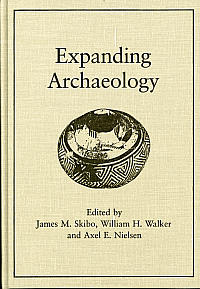
|
Expanding
Archaeology Foundations of Archaeological Inquiry Series Edited by James M. Skibo, William H. Walker, and Axel E. Nielson University of Utah Press 1995 1st ed. ISBN# 0-87480-479-5 cloth hardback Behavioral
Archaeology Without theory, there would be no means by which to perform most kinds of research, and archaeology is a hotbed of theoretical research perspectives. Though this kind of material can be difficult for the amateur or avocationalist archaeologist, reading through books such as these two volumes will provide them with a provocative new viewpoint of what archaeologists are really seeking to discover about ancient behavior and technology. That makes these books essential reading. Cultural conditioning of behavior is thought to be accomplished through habituation and thus acts through unconscious processes rather than rational deliberation. Many archaeologists find limitations in this definition when they attempt to define specific behaviors, finding the approach too organismal, separating the materials used in behaviors from the overall behavior. “Despite the well-known incompatibilities of method and theory that divide archaeologists into processional, post-processional, and selectionist schools of thought, they all share conceptions of behavior that stem from the organismal research that supported much of the nineteenth-century expansion of method and theory in physiology, psychology, and evolutionary biology.” “Behavioralists, however, dispensed with the concept of culture in order more freely to investigate challenging anthropological topics.” In these volumes the authors “employ a comparative method based in behavior, rather than culture, to address such topics as social power, gender, ritual, material culture, economics, and technology.” In short, these volumes examine how behavioral archaeology strives for “general study of the relationships between artifacts and human behaviors as its goal for the discipline.” Behavioral archaeology, in fact, redefines archaeology as “the study of the relationships between human behavior and material culture in all times and places.” It is an “explicit reaction to the naïve optimism and methodological innocence” of Binford’s statement that “The loss, breakage, and abandonment of implements and facilities at different locations, where groups of variable structure performed different tasks, leaves a ‘fossil’ record of the actual operation of an extinct society. This fossil record may be read in the quantitatively variable spatial clustering of formal classes of artifacts.” It is in the struggle to bridge the gap between data and middle-range theory that the “New Archaeologists” and behavioral archaeologists find conflict, with the behavioralists arguing for a complete reconstruction, that “testing social theory against the archaeological record presupposes the ability to infer behavioral phenomena of the past; and that , unequivocally is reconstruction.” Schiffer’s volume, a book you will use as reference and quote time and again, covers the “first principles” of Behavioral Archaeology’s reconstruction of archaeology generally, examining a range of issues from flaws in the way contract archaeology is structured to methodological issues present in ethnoarchaeology to an examination of the critical study of technological change. Read both of these volumes and you will understand the basics of behavioral archaeology as well as valid experimental models where the principles and strategies of behavioral archaeology were used in analysis of material remains. There is no doubt that these volumes will present a challenging read to those uninitiated to readings concerning anthropological and archaeological theory, but don’t let that stop you from trying. “To some it might seem as though archaeology has ceased as an organized discipline. ‘Paleoethnology,’ ‘ethnoarchaeology,’ ‘action,’ ‘living,’ ‘experimental,’ ‘contract,’ ‘public,’ ‘processual,’ ‘historic,’ ‘systems,’ and ‘industrial archaeology,’ as well as many other seemingly disparate programs, compete for the attention of modern archaeologists. This diversification of research interests is so far-reaching that it compels us to ask fundamental questions about what we are doing, why we are doing it, and how it relates to what others are doing. We contend that the expansion of archaeology into little-explored domains is an expectable outcome of several long-term processes operating in the discipline. Clearly, these processes are leading to an expanded conception of the nature and aims of archaeology. Archaeology has not ceased to exist as an organized discipline; it is merely reorganizing into a new configuration.” Expanding Archaeology
and Behavioral Archaeology:
First Principles are both part of University of Utah’s excellent Foundations
of Archaeological Inquiry series. Both
volumes
can be ordered direct from the publisher, for $25.00 each, by clicking here. reviewed
by
Bob
Wishoff
|
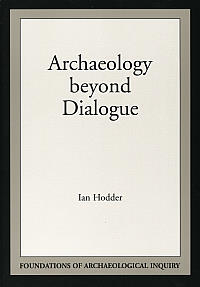 |
Archaeology
beyond
Dialog Foundations of Archaeological Inquiry Series By Ian Hodder University of Utah Press 2004 1st ed. ISBN# 0-87480-780-8 paperback Another volume in the “must have” series Foundations of Archaeological Inquiry published by the University of Utah Press! In Archaeology Beyond Dialog, Ian Hodder probes the methodology and logic of processual archaeology, suggesting that those methods, along with other global trends, are shoving alternative theories and ideas outside of serious research. Hodder begins by defining dialog from debate: “Archaeology has always involved debate. Indeed, the discipline is partly defined by the ‘great debates’ regarding the ‘antiquity of man,’ or more recently the date of the first spread of humans into the Americas, or the relevance of evolutionary principals for cultural change. The emphasis on dialogue includes such debates but it moves on subtly from ‘defining archaeology’… In order to understand this shift it is helpful to look at some of the ways in which power and influence in arcaeology have to some extent moved away from the white, male Western ‘academy.’… The focus on dialogue in this book partly involves the search for dialectical agreements, by which I mean those that recognize the unity of opposites, that seek tensions in social processes, that see societies as both structured and contingent, and that recognize the role of agency as well as unacknowledged conditions and unintended consequences. But the focus on dialogue more specifically relates to the contention that scientific knowledge does, and should, proceed through debate, both within and beyond the boundaries of the discipline, and including reflexive critique of the assumptions and taken-for-granteds of the academy.” Hodder contends that we explore material culture without regard for the meaning humans apply to this material. He contends we underplay a human’s inherent responses to material culture--- we disregard the importance of the stories and histories created by people as response to their material cultural environment. Hodder then methodically dissects basic processual methods and assumptions, revealing in many cases, how little post-processual thinking has percolated into research. This is a most significant book, one every avocational and professional archaeologist should read and ponder over. Hodder makes some convincing arguments that we are overlooking alternative ideas about nearly every topic in the discipline. Archaeology Beyond Dialogue
is an important book which should be in your library. This volume, as
well
as the rest of the series, can be viewed here. Archaeology Beyond Dialog
is available in either hard cover or paperback, the latter selling for
$25.00. reviewed
by
Bob
Wishoff
|
 |
The Tall Grass
Prairie Peninsula: Here’s a cool little book which is comes complete with an online series of tutorials, and a most enthusiastic author. When I emailed Jim Fay to request a review copy, he spent more time trying to convince me to let him assist in the production of my own volume than in pitching his own book! “Just send me the materials and let me do the rest!”—I can almost see him smiling! What Fay has put together is an eccentric volume about “a rather amorphous geographical area that is not precisely defined by any one characteristic… Indeed, Edgar Transeau, the plant/ecologist/geographer who coined the expression “prairie peninsula” made five different maps of the area… It is true that this book deals largely with the distinctive community of plants and animals that make up the area… But it is also true that in the final analysis the book [is concerned with] the human community of that area and with the cultures of the people who lived in that land. That makes it even harder to nail down exact boundaries.” Purchase the book
directly from the publisher, for $25.80,
by clicking here. reviewed
by
Bob
Wishoff
|
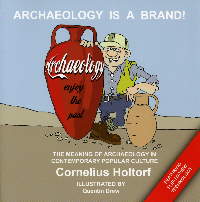 |
Archaeology
is a
Brand! The Meaning of Archaeology in Contemporary Popular Culture by Cornelius Holthorf, illustrated by Quentin Drew Left Coast Press, Inc. 2007 1st ed. ISBN# 978-1-59874-178-0 paperback I absolutely loved this book. There is simply no one else to turn to for such an eye opening and honest look at how archaeology is viewed by the public. I just finished a seminar in Archaeology as part of my coursework toward a master's degree in anthropology and one topic brought up consistently is "What does archaeology mean to anyone?" The most consistent answer through out is that it means little, except to professionals. I was outspoken on this, believing archaeology to be extremely relevant to everyone, but alas, until Holhorf, I had no one to back me up! Holtorf examines virtually every facet of archaeology as practiced in the modern world and contrasts it with how the public sees the discipline. Since the public is where most funding come from, this is a most relevant idea, and one practiced by professionals in Europe, but for some reason largely ignored in America, where academics try to segregate archaeology from the public. I swear, you'll read this book in one go round! I certainly did! The book's full of wit, humor, intelligence and great factoids you'll constantly fire-off in conversations with professionals and amateurs alike! Perhaps, best of all for students of the discipline, there's a huge reference section for you to exploit! Holtorf's book is full of great quotes: "... the value and significance of archaeology is largely rooted in the 'archaeo-appeal' it conveys and not in the extent to which a time-traveler would actually recognize the past in our reconstructions of it. An archaeologist ought to be celebrating that appeal, openly and unashamedly." He states truths boldly (and in boldface): "The single most important source of information about archaeology is TV." and "The most common association people have with archaeology is digging up things." What are archaeologists' main themes within popular culture? Holtorf defines these as "the archaeologist as adventurer; the archaeologist as detective; the archaeologist making profound revelations; and the archaeologist taking care of ancient sites and finds." The author spends a great part of the book articulating these themes and you'll love every page. Even the clothing associated with archaeologists is fodder for Holtorf's sharp wit and eye. He notes how Indiana Jones is portrayed and how field archaeologists perhaps unconsciously fall into being "deliberately unfashionable," quoting Time Team presenter Tony Robinson as having said that "you could distinguish archaeologists by their poor dress and bad haircuts." Holtorf wrote this book for archaeologists, but it is every bit as important a read for anyone interested in the field of Archaeology. It is the only book I've ever received for review that I have ever given away-- I made it a gift for one of my professors and bought another copy for this review! Pick up a copy for $24.95 direct from the publisher by clicking here. reviewed
by
Bob
Wishoff
|
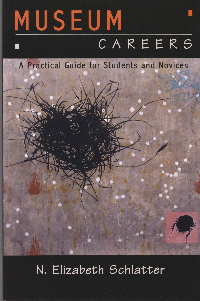 |
Museum Careers A Practical Guide for Students and Novices by N. Elizabeth Schlatter Left Coast Press, Inc. 2008 ISBN# 978-1-59874-044-8 paperback With the popularity of the Night at the Museum series of movies, this book should have a sure audience. Lots of folks who have seen the movie might be interested in what it takes to get a job at a museum and be a part of the show and this book does just that. In the first part of her book, Schlatter provides answers to basic questions such as "Why work at a museum?" and "What is a museum?". There is no denying the low wages a museum worker is paid-- you have just got to love it. Schlatter next examines trends in employment at museums. Basically jobs are divided between those that deal directly with objects, or collections, and those that focus on direct contact with the public, such as marketing, or security, etcetera. Schlatter even lists how much everyone, on average, earns doing museum work. She shows charts that break down salaries by job description and size of institution. Her book includes an exhaustive list of weblinks to museums, and other references that will help you get on the road to a career! Museum Careers sells for $24.95 and can be ordered directly from the publisher by clicking here. reviewed
by
Bob
Wishoff
|
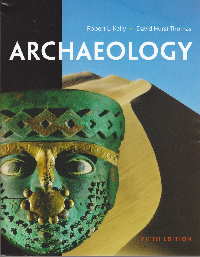 |
Archaeology by Robert L. Kelly and David Hurst Thomas Wadsworth, Cengage Learning 2009 ISBN# 978-0-4956-0291-0 oversized paperback The fifth edition of this popular textbook updates important new information about both theory and methodology: it continues to be very readable and understandable for new students of the discipline. It is an excellent textbook for home-schooling, and avocationalists will find it a handy reference to keep on their shelves. I can recommend this textbook because I studied the fourth edition of this fine text for my own introduction to professional archaeology at Texas State University-San Marcos. Here's a chapter listing: Chapter 1 - Meet Some Real Archaeologists Chapter 2 - The Structure of Archaeological Inquiry Chapter 3 - Doing Fieldwork: Surveying for Archaeological Sites Chapter 4 - Doing Fieldwork: Why Archaeologists Dig Square Holes Chapter 5 - Geoarchaeology and Site Formation Process Chapter 6 - Chronology Building: How To Get A Date Chapter 7 - The Dimensions of Archaeology: Time, Space and Form Chapter 8 - Taphonomy, Experimental Archaeology, and Ethnoarchaeology Chapter 9 - People, Plants and Animals of the Past Chapter 10 - Bioarchaeological Approaches to the Past Chapter 11 - Reconstructing Social and Political Systems of the Past Chapter 12 - The Archaeology of the Mind Chapter 13 - Understanding Key Transitions in World Prehistory Chapter 14 - Historical Archaeology: Insights on American History Chapter 15 - Caring for America's Cultural History Chapter 16 - Archaeology's Future There is also a useful Glossary at the end of the book. Cengage markets this excellent and engaging book (and all of its fine textbooks) in a unique and handy fashion through their iChapters website. You have the choice of ordering the paperback edition ($117.49), or you can save some cash and order an electronic eTextbook ($65.49 for 180 days access). You can even order just one chapter of the book for $6.99. Additional resources for student and instructor can be bundled with your purchase for an additional $17.49. Visit iChapters.com and order this textbook by clicking here. reviewed by Bob Wishoff |
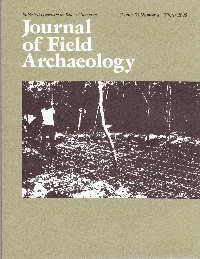 |
Journal of
Field Archaeology Edited by Curtis Runnels Managing Editor: Al B. Wesolowsky Published by Boston University Quarterly Published since 1974, the Journal of Field Archaeology offers a look at the latest news from excavations around the world. Here you can read about advances in methodology and theory relevant to excavation planning and interpretation. Recent issues have also spotlighed special studies of animal resource exploitation in the southeastern U.S. as well as articles concerned Beliezian copper artifacts and stone age blades from South Africa. Every issue contains articles pertaining to archaeological heritage and ethics. What's best of all is that the editors offer a substantial discount for students! Regular individual subscriptions cost $75.00, but "bona fide" students pay only $35.00. Students, show your support for this kind of policy and subscribe to this respected journal! For more information about the journal (including a complete index) and to order your subscription online, click here. reviewed
by
Bob
Wishoff
|
 |
Ancient Health Skeletal Indicators of Agriculture and Economic Intensification Edited by Mark Nathan Cohen and Gillian M.M. Crane-Kramer University Press of Florida 2007 1st ed. ISBN# 978-0-8130-3082-1 cloth hardback Paleopathologists study skeletal remains recovered from archaeological sites. Together with archaeologists, they analyse those data for trends in the health of populations over time. Twenty years ago editor Mark Nathan Cohen put together a set of papers that proposed these trends might be accounted for in technology changes that would affect the diet, such as agricultural intensification. It has been shown that peoples' health suffer as they adopt agriculture and become sedentary. However, critics (among them, the very same authors of some research) found alternative explanations for some observed trends and their supposed relationship to technological change. Also cited as a reason to doubt these trends as indicators of intensification was the "osteologic paradox" . Let's say an archaeologist finds in human remains bones that are indicative of a particular chronic disease. The bone's condition could actually indicate that the person survived the disease, and that scarring to the bone occured as the person healed. Those who quickly succumb to a disease seldom show much skeletal damage-- simply put, survivors skew data trends. That, in a nutshell, is the osteological paradox (it is actually a little more complex that that, but you get the idea). Over time, research tools and methods have arisen that have remediated some of the complaints. For one thing, the amount of data that has been collected has increased the data set used for spotting trends. Better statistical tools have allowed for data to be compared and "weighted" more easily within computations. Arguments about the osteological paradox continue, but the papers presented in the book address this issue directly. The book takes on an ambitious global scope, presenting papers from Chile, Peru, the United States, Denmark, Britain, Portugal, South Africa, Israel, India, Vietnam, China and Mongolia. This ambitious book is a most interesting read. As well as interesting articles, the book's 50+ pages of references will please anyone doing research. I found a citation for a paper I was writing within 10 minutes after browsing through it. This kind of research offers supporting/contrasting evidence for many researchers investigating early to middle archaic semi-sedentary groups in an attempt to understand social organization and intensification. Ancient Health can be ordered direct from the publisher's website ($75.00 cloth hardback) by clicking here. reviewed
by
Bob
Wishoff
|
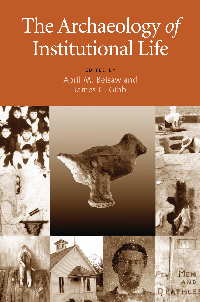 |
The
Archaeology of Institutional Life Edited by April M. Beisaw and James G. Gibb Universitry of Alabama Press 2009 ISBN# 978-0-8173-1637-2 cloth hardback People have been institutionalized for all kinds of reasons over the years, and there have been all kinds of "stories" depicting life in these institutions, running the gamut from kindly to real nightmare. Peolple cloistered themselves in temples, nunneries , monasteries, to pray and/or live lives isolated from others. Most people, however, find themselves institutionalized in orphanages, prisons and mental wards, and these are also frequently alter-societies that operate under their own sets of rules. An examination of these kinds of environments can lead to many valuable inferences about the larger society around them. Reasons for institutionalizing people are varied, and many are centered on gender issues and issues of political and social values that existed at the time of the institution's operation. This fascinating book contains a wide range of examined instituions. The papers, predominately feminist in viewpoint, show how attitudes toward gender can be inferred from many for the studies. After all, institutionalizing people takes power, and the nature of that power, and how it is excercised are largely preserved in the remains of "campuses" where institutionalization took place. In all of the papers, what is brought out is that institutions are places of bothe surrender and rebellion, no matter how benign the environment. Some of the papers reveal institutions that get a "raw deal" in the way they are remembered--- a 19th century orphanage, for example, is shown to have been quite a pleasant place for its residents to live, unlike the range of miserable places that writers such as Dickens have portrayed in their fiction. A paper about prison graffiti was also quite interesting. The article compared graffiti found in prisons in various countries, and found several currents and themes through them, all indicative of both conditions at the prisons, and the psyches of prisoners kept within them. Historical Archaeology is a hot topic these days. This book will give young researchers some ideas about projects that might be very close to where they live, as well as how to correlate data recovered from them. The Archaeology of Institutional Life can be ordered directly from the publisher ($52.50, cloth hardback), by clicking here. reviewed
by
Bob
Wishoff
|
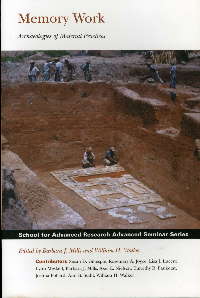 |
Memory Work:
Archaeologies of Material Practices This is how the editors open this collection of essays, which deal with the creation of domestic and ritual methods for remembrance and their role in the transmission of these memories not only to the cultures that create them but also in archaeology’s understanding of deposition of related materials. This not immediately obvious relationship between artifacts and the facts lying behind their manufacture is well explicated in their introduction, which though at times dense, plentifully annotated and discussed with a high level of intellectual abstraction is well worth the effort it takes to follow. On reflection it may seem obvious to the casual outsider that created objects are all ultimately manifestations of a “social memory” (a term coming into favor over “collective memory” or collective consciousness), but just how this relationship comes into play in our understanding of the objects archaeologists bring to light is finally being more deeply investigated as a conceptual tool for understanding the cultural milieu in which they arise. This collection of papers, per the authors, initially arose out of a sense that “archaeologists working on the topics of ritual, memory and depositional practice seemed to have increasingly small citation circles” and many of the topics have been explored at seminars at the School for American Research, the American Anthropological Association and a session of the Theoretical Archaeology Group in England. The topics dealt with in these essays are wide ranging and focus on specific examples of how “memory work” emerges from the study of depositional patterns of materials. These studies range as wide as Neolithic South Britain, Mississippi Valley mounds, Mayan and Andean sites, and Chaco Canyon, as well as of the spiritual and religious significance of dog and other animal remains found in the prehistoric American Southwest and historic Africa. As Lynn Meskell succinctly puts it in her concluding chapter, “This collection brings together an impressive array of themes that goes well beyond the single-issue type of analysis to which are accustomed in archaeology... With the practice of structured deposition as a key starting point, the authors traverse a range of timely topics that resists disentangling. One cannot think of a buried object world without considering, memory, forgetting, magic, secrecy, and so on…The archaeologists in this volume have begun to truly embed things in creating accounts of embodied things or those that effectively blend with subjects, deities, entities, places, technologies, and so on. This new research is exciting for us as archaeologists and offers a compelling contribution to the broader framings of these issues for those in related disciplines.” All in
all, this makes for relatively dense reading yet
rewards the effort with far reaching insights into the nature of what
is revealed
by the process of archaeological research.
Available from the SAR Press website here for $34.95, paperback. reviewed
by
Charles
Swenson
|
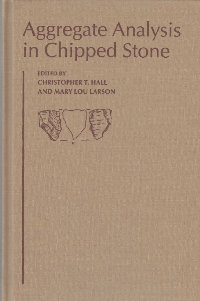 |
Aggregate
Analysis in Chipped Stone Debitage analysis, the analysis of chipped "waste" product left over from chipping operations, is a field of study of rather recent vintage. The so called "New Archaeology of the 1960s as well as the rise of CRM (Cultural Resource Management) created projects wherein thousands, sometimes tens of thousands, of pieces of recovered debitage needed interpretation. The editors note that "rather than choose to use statistical sampling strategies, as some of the earliest New Archaeologists would have it, debitage analysts have moved toward analysis of the assemblage as a whole"-- i.e., aggregate analysis. There seemed to have been few ethnographic or ethnoarchaeological analogies for which researchers could infer Middle Range theory to "link the archaeology to the behavior that created it", so researchers depended upon experimental archaeology for inferences regarding the mechanics of knapping various materials, and to observe debitage created by such experiments. Even though the results of these experimental replications did not always clarify which methods might have been used in ancient times, the researchers in this book argue that "multiple lines of evidence" "yield more robust results than singl lines of inquiry. THe authors identify several categories of debitage analysis: attribute, typological or item, and aggregate, and discuss the differences between aggregate and mass analyses. It is important for a researcher to understand the limitations and scope of each aggregate analysis method, and the book provides adequate comparisons that will aid the researcher in making the right decisions. Aggregate Analysis in Chipped Stone is definitely not a book everyone will enjoy, or understand. But, if you are interested in the whys and hows of contemporary debitage analysis--- and certainly if you are faced with a project where debitage analysis is one of the major goals-- then this book will prove to be an indespensible reference. The eleven papers in the book quite simply cover all of the bases and cannot be ignored! Frankly, it is amazing how much information can be elicited from that which was considered mere waste just two decades ago! Aggregate Analysis in Chipped Stone can be ordered directly from the publisher ($50.00 hardback) by clicking here. reviewed
by
Bob
Wishoff
|
 |
Ancient
Human Migrations Another book in the incredibly interesting and useful series "Foundations of Archaeological Inquiry" (series edited by James Skibo)--- University of Utah has done all archaeologists and students of archaeology a great favor by adding to this series of books! Ancient Human Migrations is a bold take on a difficult subject. It originated from a working conference at the Santa Fe Institute. Murray Gell-Mann lists some of the questions about migrations that this book seeks to address: How can one detect a migration without historical records?; How can one distinguish a migration from contact-determined similarities?; How can one identify and stratify multiple prehistoric migrations?; Are there any markers of prhistoric migrations other than languages or physical characteristics?; Can one use the spread of certain cultivated plants or agriculture in general as markers of migration--- what about material culture, belief systems, or folklore? Two of the chapters I found particularly interesting-- Languages and Migrations by Ilia Perios is one of the clearest explanations of how linguistics can inform about migrations and prehistory in general. This chapter, coupled with Henry T. Wright's Humanity at the Last Glacial Maximum give the reader a fascinating insight into the roots of language and how researchers are able to infer so much information from language, even protohistoric languages --- some of the earliest definable protolanguages! Actually, I also really enjoyed Yuri Berezkin's Why are people mortal? as well... OK, I loved the entire book! (LOL). Pick up a copy of Ancient Human Migrations ($30.00, paperback) directly from the publisher by clicking here. Browse the entire 28 volume collection of the Foundations of Archaeological Inquiry Series by clicking here. reviewed
by
Bob
Wishoff
|
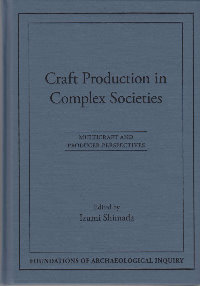 |
Craft Production in Complex
Societies
|
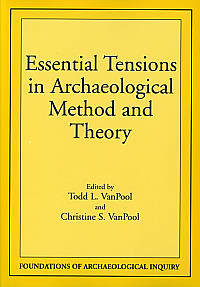 |
Essential
Tensions
in
Archaeological
Method and Theory Another book in the incredibly interesting and useful series "Foundations of Archaeological Inquiry" (series edited by James Skibo)--- University of Utah has done all archaeologists and students of archaeology a great favor by adding to this series of books! Essential Tensions in Archaeological Method and Theory is a dialogue that tries to encomapss the fact that archaeological theory seems to have fragmented itself into a thousand diverse "pieces". These so-called "fundamentalisms" have meant that researchers are working on broader and brader sets of empirical issues that are increasingly refined into a variety of perspectives. The VanPools create a dialogue that questions whether researchers should be broadening perspectives, or developing a set of differing methodologies that are specific to certain kinds of questions: i.e., not seeking "grand unifying theories". An essential book for any archaeologists' or students' library, the VanPools have assembled a collection of incredibly thought-provoking essays that will stimulate discussion for some time to come. Simply put-- get this book! Essential Tensions in Archaeological Method and Theory ($25.00, paperback) can be ordered directly fromt he publisher by clicking here. Browse the entire 28 volume collection of the Foundations of Archaeological Inquiry Series by clicking here. reviewed
by
Bob
Wishoff
|
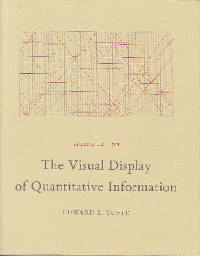  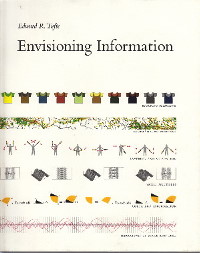 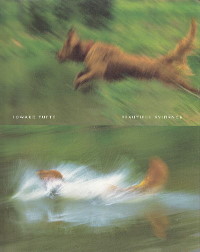 |
The
Visual
Display
of
Quantitative Information "Edward Tufte has written seven books, including Visual Explanations, Envisioning Information, The Visual Display of Quantitative Information, and Data Analysis for Politics and Policy. He writes, designs, and self-publishes his books on analytical design, which have received more than 40 awards for content and design. He is Professor Emeritus at Yale University, where he taught courses in statistical evidence, information design, and interface design. His current work includes landscape sculpture, printmaking, video and a new book." The Visual Display of Quantitative Information is a true jewel among books. I have personally not read another book like it! If you are faced with the need to communicate vast amounts of quantitative information is some form easily digested by your readers, well, this book is for you! It is unique. It is incredibly clear in its scope and will without a doubt improve your work exponentially! Tufte writes of how his original publishers made the book incredibly expensive and hard-to-find. so what did he do? Well, he mortgaged his home and invested all of his funds to start a press in order to make the book available--- that's passion--- and it is worth it! Calling this book a landmark, is quite simply an understatement. BUY this book for yourself, or as an incredibly useful tool for any student of any topic! WOW! It's incredible! I agree with the author who writes that the book "gave to me fresh new eyes for the intellectual and aesthetic joy of visual evidence, visual reasoning, and visual understanding." Order this book directly from the publisher ($40.00 cloth hardback) by clicking here. Make sure you take the time to look over the author's website! It's an experience all by itself! I'd love to attend one of his lectures. Visual Explanations: Images and Quantities, Evidence and Narrative By Edward R. Tufte Graphics
Press 2003, 6th printing
ISBN# 978-096139212-3 cloth hardback Envisioning Information By Edward R. Tufte Graphics
Press 2006, 11th printing
ISBN# 978-096139211-6 cloth hardback Beautiful Evidence By Edward R. Tufte Graphics Press 2006, 1st printing ISBN# 978-09613921-7-8 cloth hardback
I could not resist pointing out the other volumes by this extraordinary author! Each of these three volumes stand as excellent companions to the others. Since reviewing The Visual Display of Quantitative Information, I have become familiar with other reviews of these books, and I’m astonished by the range of interest in them--- from biologists to mathematicians to archaeologists, each have found something in these books that they believed their colleagues could use to more effectively communicate their work.
Tufte notes, in Visual Explanations: Images and Quantities, Evidence and Narrative that his books on information design stand in the following relation: The Visual Display of Quantitative Information is about pictures of numbers, how to depict data and enforce statistical honesty. Envisioning Information is about pictures of nouns (maps and aerial photographs, for example, consist of a great deal of nouns lying on the ground. Visual Explanations is about pictures of verbs, the representation of mechanisms and motion, of process and dynamics, of causes and effects, of explanation and narrative. Such displays are often used to reach conclusions and make decisions, there is a special concern with the integrity and concept of the design.
Beautiful Evidence focuses on that which is both science and art… the author notes that a colleague of Galileo described Galileo’s hand-drawn images of sunspots as beautiful evidence. This book, the author writes “is about how seeing turns into showing, how empirical observations turn into explanations and evidence. This book is my favorite of the set--- it is a wonder of design.
In Envisioning Information Tufte writes that “To envision information—and what bright and splendid visions can result—is to work at the intersection of image, word, number, art.” Tufte’s books need to be read—there simply are few ways to review their contents—it’s the author’s astute uber-vision that pulled together the “arrays” of “ exemplary design” and his comments upon them that makes the book so entertaining and such compelling reading.
Each book is beautiful to peruse-- each book invites you to read-on and dares you to stop. My friends at first laughed at the “geeky” books I was reading, and then fought over which of the books they could borrow. Seems everyone notices the various “factoids” shoved out as proof or evidence of this-or-that and welcome a text that looks at facts in such an organic, yet comprehensive, manner. Tufte’s books are for all to enjoy and ponder.
Each of Edward Tufte’s remarkable books and more can be found at his website—click here. Do your favorite researcher or student, a favor, and order them a set! Donate a set to your local library! Better yet, buy a set for yourself!reviewed
by
Bob
Wishoff
|
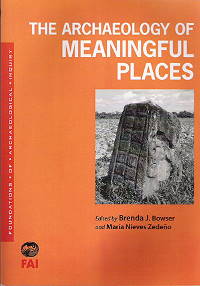 |
The Archaeology of
Meaningful Places Place has meaning, and over the course of time archaeologists have begun to focus not just on the internal organization of separate sites but on their relationship to the broader geographical and sociocultural spatial and temporal landscapes in which they exist. This broader approach in turn helps to lend a sense of continuity and historical flow to the archaeological record, to “produce narratives and explanations of the past that both address the concerns and needs of the profession and satisfy the many public interests in archaeology.” Hence this volume, “…the result of a shared and growing interest in redefining the theoretical and methodological tools needed to reconstruct the complex archaeological histories of people’s relations with the places that constitute their natural and built environments.” The origins of The Archaeology of Meaningful Places emerged at a 2002 Society for American Archaeology symposium, expanding on some presentations there as well as containing invited contributions on the subject. The examples of examination of space and place are drawn from Mesoamerica and the American Southwest. ‘Biographies of place’ among Mayan ruins at Quirigua, Guatemala are investigated through the use of iconographic and architectural denotations of historic and diplomatic events, as well as the use of spaces for community integration through ritual events. The ‘life history’ of the Main Plaza at the Zapotec city of Monte Alban, with its “complex history of construction, use, modification, abandonment, reuse, and reconstruction” is seen as a reflection of “transformations in sociopolitical relations, ideology, and identity in the Valley of Oaxaca and beyond”. Seasonal and spatial orientation of urban settlements and Mayan ball court utilization in the lower Ulua and Cuyumapa river valleys during the Late to Terminal period are looked at as reflections of a larger ‘geomantic’ landscape, as well as the imposition of Aztec imperial control through the geopolitical manipulation of centers of power within the sociopolitical landscape. The role of monument as metaphor within the cultural landscape of the Hohokam is discussed, as well as the function of ancestral villages, ancestral grave sites, granaries, fields, cooking pits, shrines, offering places, pilgrimage routes, trails, trail markers and petroglyphs and pictographs as a collective backdrop in Hopi society. But there are also papers here that allow a more contemporary outlook on the complex manifestations of a society’s relationship between the natural environment and its utilization of that backdrop. One deals with the ongoing ‘reconstructive place making’ by the Ndee (Western Apache) at the White Mountain Apache Tribal lands through “well-established, though still-unfolding uses in ecological restoration, cultural education, the protection of sacred sites, and the reconstruction of Ndee authority over their land, history, and future.” Another chapter on “Commodification of Land on the Arizona Frontier” deals with the complexities involved in unraveling the mythologies that surround the settlement of the American West from the realities of land policies that shaped views on the use of land. Territorial homesteading was fundamentally different from previously existing Spanish/Hispanic land policies which focused more on the unique qualities of the environment, while the Public Land Survey System enforced a Cartesian grid system was enforced over the entire landscape, with ‘the tragedy of the commons’ amplified by strategies “based on capitalizing on the exchange of land, subverting the idealistic intentions of the system” into ‘the tragedy of commodification’. But, at least for this reader, the most eye opening, enlightening and downright enjoyable chapter is the last, Stephen Lekson’s “Lost Cities, Prairie Castles.” Lekson compares the Mesa Verde so well known and beloved to archaeologists with the artificially manufactured Manitou Cliff Dwellings in Colorado Springs, as well as matching the National Park Service’s recreation of Bent’s Old Fort against a similar recreation on the outskirts of Denver, The Fort Restaurant. He uses these Colorado attractions as a springing board to investigate the slippery nature of place and meaning. “On a sliding scale of reality, Mesa Verde is real; Manitou is relocated; Bent’s Old Fort is reconstructed; and The Fort restaurant is really tasty. All four places are interesting, and all four tell us useful things about interpretive archaeology, because all four are interpretations of archaeological places. How do we tell stories, and how do we interpret archaeological places?” This chapter, with its wit and deep insight, rates easily as one of the most meaningful written on the very nature of archaeology’s value for society at large, compelling yet one more quote from its final paragraph to highlight what this book is all about. “We need revisionist archaeologies of these ancient places, just as we have revisionist histories of Bent’s Old Fort. We need to rethink or givens, like ‘kivas.’ We can do this with an archaeology that recognizes (and honors) the dynamic nature of American Indian traditional histories. Pueblo people recall very well that their past was different from their present. They have history: heroes and villains, rises and falls, grand narratives – all the things we expect to see in history books. But the NPS and most archaeologists say we cannot tell that history, that we cannot know it. I strongly disagree. We can know its broad outlines and often its telling details. Let these places have history: they have earned it.” This volume
from the University of Utah Press, the latest
of the Foundations of Archaeological Inquiry series edited by James E.
Skibo,
is available here
(240 pages, generously illustrated) for the low price of only $30. Pick it up and be prepared to enjoy the
fruits of its ideas for a long time to come. reviewed
by
Charles
Swenson
|
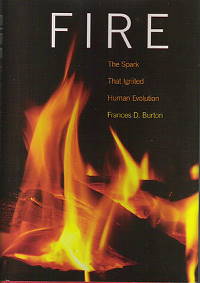 |
Fire – The Spark
That Ignited Human Evolution It has long been a truism that fire has played an integral role in the development of hominids into the human race we’ve come to know and love these days. Frances Burton, Professor Emerita of Anthropology at the University of Toronto, brings her career in primate behavior to the fore in this book to investigate the role of fire in the evolutionary transformation of man from his ape-like predecessors. She speculates that approach to wildfire locations by hominids may have been spurred by the presence of pyrophylous (fire loving) insects and other modified food sources there, serving as an impetus to linger around fire and gain acquaintance with its properties and potentials. With this familiarity came an overcoming of the innate fear of fire and ultimately a degree of controlled management of fire. She cites early archaeological evidence of non-enclosed ‘casual’ fire sites associated with human artifacts as long ago as 1.6 million years ago, with hearth clusters dating back as long ago as 400,000 years ago. Archaeological evidence fire associated with human artifacts such as Koobi Fora in Kenya may suggest that fire may have been used more for light than for cooking, though “scientists are careful to differentiate what may be the use of fire from what is clearly fire use by hominins (her term)”, making a clear distinction that “finding evidence of fire cannot necessarily tell us about its functions…” A major thesis in her book is the potential for the psychophysiological effects of altered circadian rhythms secondary to prolonged exposure to light, especially the higher frequency blue light, of fires. She refers to this as “the campfire study,” with prolonged exposure to light causing phase shifts in the circadian rhythm with lowered melatonin production and hormonal changes with hints from the fields of behavioral endocrinology, socioendocrinology, and epigenetics. She feels that this is where a major evolutionary change from ape to man. To quote Burton, “(t)he hypothesis that I am putting forth in this book is that the light of the campfire could cause a phase shift, increasing the body’s daytime by decreasing melatonin. The anthropological literature has always noted that campfires would ‘extend the day,’ but the physiological implications of this were not explored…The repercussions throughout hormonal systems and patterns of brain activity over time may be a critical factor in explaining the divergence of our species from kindred apes.” In short, Burton seeks to show how fire accelerated the evolutionary path because the earliest precursors of man “were more interest in delicacies found at a smoldering fire than they were afraid of heat or flame; they were playful and social and dared to pick up firebrands; they saw the advantage of brandishing these sticks at predators that came too close; and they found comfort in fire’s warmth and perceived that putting twigs into it kept it going. They changed the timetable of growth, development, and reproduction because sitting by the fire altered the night’s flow of melatonin and the cascade of hormones that follow it. Rates and patterns of growth, along with regulation and activation of genes, all changed as a consequence, accelerating processes of mind, body, disease, and society in the transformation to us.” This intriguing and thought provoking hardcover book is available here from the publisher’s website, for $34.95.reviewed
by
Charles
Swenson
|
 |
Virtual Dig Here is a
unique product that lets students explore what it takes to mount an
important excavation. Think you can manage a real excavation--- give it
a shot! This book includes an innovative CD-ROM that keeps up
with the details of your excavation plan. Here's an
excerpt from McGraw hill's website that gives you an overview of the
entire project: This combination of workbook and CD-ROM (Win PC only) functions as a "virtual field school" that gives students the opportunity to carry out an excavation using real data. Based on excavations at the Middle Paleolithic site of Combe-Capelle in France, the exercises included in Virtual Dig ask students to access the CD's database to analyze and interpret findings. The Virtual Dig Table of contentsPART I INTRODUCTION AND
BACKGROUND Order the Virtual Dig direct from the publishers for $57.50
(includes oversized paperback text and CD-ROM) by clicking here. reviewed
by
Bob
Wishoff
|
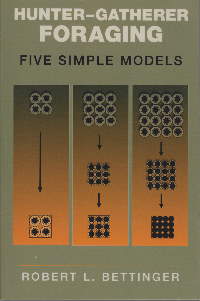 |
Hunter-Gatherer
Foraging: Five
Simple Methods By
Robert L. Bettinger Eliot
Werner Publications, Inc. 2009 paperback Foraging
theories
are
a
controversial, but important part of our desire to understand
how early humans lived day-to-day. Strategies for survival vary by
environmental
conditions, and in some cases, by social practice. In either case,
there have
been means devised in which a researcher can make some inferences as to
not
only what kind of specific diet a people could have eaten, but whether
any
specific regimen was one which was energy-efficient. In other words,
whether
the people involved were constantly at a calorie deficit or not. Now,
if this seems an intimidating task, in lots of ways you are correct.
After all,
it not only means knowing how many calories are in a particular snail
or
squirrel, but also how many calories a person will expend in hunting,
preparing, and cooking the item. If a researcher is interested in
developing
models of evolutionary, or adaptive fitness of a particular organism
(in this
case, humans) to a particular environment, or even a rationale for
certain
social customs, finding an analytical means of determining optimal
foraging capability
could allow a means for testing those models. Robert
Bettinger
is
one
of the central figures within the development of foraging
theory. In this book he gives the reader “five simple models” for
hunter-gatherer foraging, and further shows the reader how to wind his
or her
way through the math and logic of each (using MS Excel)—he even
provides exercises
to ponder (answers at back of book). The book’s contents include
chapters
entitled How to Calculate Optimal Diet Breadth; Optimal Foraging with
Constraints: Linear Programming; Front- and Back-Loaded Resources:
Caching;
Technological Investment; and, Field
Processing II. This
book would make an excellent accompaniment to many anthropology and
archaeology
courses, both at high school and college levels. However, you’ll need a
little
background information on the general topic before much of what is
proposed in
the book will be fully understood (at least by most casual readers). In
fact,
there are many writers who comment on foraging theories without really
knowing
how to do any of the computations involved, and therefore, notes the
author,
they cannot really understand what they are writing about! reviewed by Bob Wishoff |
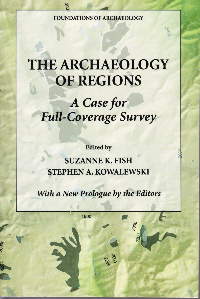 |
The
Archaeology of Regions A
Case for Full-coverage Survey Edited
by Suzanne K. Fish and Stephen A. Kowalewski Eliot
Werner Publications, Inc. 2009 paperback ISBN#
978-0-9797731-0-5 This
very interesting book is a reprint of a 1990 Smithsonian Institution
Press book
that was the result of a 1985 SAA symposium covering the topic. The
editors
state that the point of the book is that “(s)ystematic, full-coverage
regional
surface survey produces more information relevant to a wider range of
anthropological problems than sampling or reconnaissance surveys.” The
editors
argue that these full-coverage surveys are cost-effective and that it
provides
data for the management of cultural resources “that are more reliable
than
those provided by other approaches”. Though the editors make an
argument for
full-coverage surveys, they do not dismiss the value of sampled
surveys. The
use of one technique over the other is a matter of both budget and the
intent
of the planned research. However, all of the writers agree that there
were no
substantially large amounts of funds required for the research outlined
in the
book. The
book contains thirteen chapters, most of them examples of full-coverage
survey
projects in venues such as Iran, Mexico, Texas, Georgia, and Arizona.
Each of
the examples illustrate how a more complete database, collected through
a more
complete survey, is better for archaeological interpretation
than
the
limited data set
interpreted through statistical sampling and analysis. Much thought
must be
given to those data collected in either case--- there is the chance
that data
not pertaining to current interests can muddle an analysis. For a good
analysis, focus should be on collecting basic data such as site
location,
environmental setting, site type, and site size as these changed over
time-- other
data should be collected later, “depending upon the local situation”. The
authors point out that what the presented studies show is that sampling
strategies have difficulty in interpreting unique or rare phenomena
(whether
artifact types or settlement types or relationships), and that
furthermore,
while probabilistic sampling designs can approximate population
frequencies,
when they approach zero, they tend to introduce problems into an
analysis. The
Archaeology of Regions is a noteworthy
book and the publisher should be applauded for re-issuing it. Any
researcher,
designing an extensive field project would benefit, I believe, from
reading
this book. If nothing else, it will get researchers to question their
goals,
and perhaps those data gathered from probabilistic studies. This
excellent book
can be ordered direct from the publisher for $42.50 by clicking here. reviewed by Bob Wishoff
|
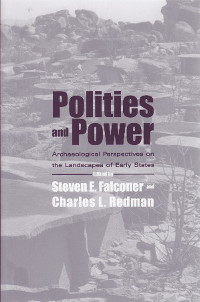 |
Polities of Power Edited by Steven E. Falconer and Charles L. Redman The University of Arizona Press: Tucson, 2009 Cloth Hardback ISBN: 9780816526031
Polities of Power is the result of a series of papers presented at the Fifth Biennial Meeting of the Complex Societies Group which was held at Arizona State University. The theme of the meeting, “States and the Landscape”, paid tribute to Robert McC. Adams whose commitment to the study of landscape archaeology has provided archaeologists with new interpretive insights into complex polities on their landscapes. Sixteen authors made contributions to this book, which covers the topic of landscape archaeology on a global scale. Editors Falconer and Redman say it best: “The authors speak from a wide variety of geographical, temporal, and perceptual points of view. This range of perspectives reflects our intent not to hone down archaeological appreciation of complex political and social entities, and their associated landscapes, but to exemplify how a variety of issues at the heart of social complexity may be explored effectively ‘when viewed through the landscape lens,’ to borrow a perceptive phrase from Rita Wright’s contribution to this volume.”
A
chapter
I found to be very interesting was “Agriculture
and the Andean State”, in which author Christine A. Hastorf looks at a
range of
agricultural technologies and relates them to political structures.
Hastorf
argues that “(a)gricultural systems express the political world of the
time,
changing as the new power structures are formed or at least changing
with the
leadership’s hopes and visions.” Using several examples, Hastorf
illustrates
that the use of agricultural systems was not always based upon the
efficiency
of that system, but on the political ideology of the rulers and the
people. Many of the chapters
in this volume focus on the archaeological landscapes of the Middle
East, but
the ideas and concepts of landscape archaeology expressed by the
authors go
beyond regional boundaries. This book is great for anyone who is
interested in
learning about the interpretation of archaeological remains to
determine what
political and ideological structures existed and how people interacted
with the
landscape and on the landscape. Polities
and Power is available from The University of Arizona Press in cloth
hardback for $55.00. reviewed
by Chris
Davis
|
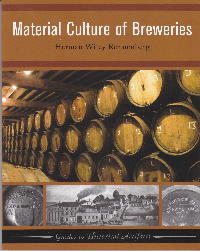 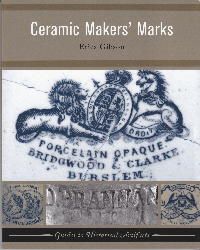 |
Guides to Historical Artifacts: A Series Series Editors: Carolyn White and Timothy Scarlett
Books in this
series are comprehensive guides to
classes of historical artifacts commonly found in excavations,
archives,
museums, and private collections in North America and across the globe.
Designed for archaeologists, material culture specialists, museum
professionals, historians, decorative arts scholars, and collectors,
the books
explore the interconnections between objects and social identity, and
are amply
illustrated to aid in the identification and interpretation of the
technical,
temporal, and diagnostic significance of objects described. The series
also
serves to collate disparate and often obscure specialist literatures
and
provides an arena for contributors to explore the role of individual
objects or
assemblages in social action within communities. Volume
One of the series, on Chinese ceramics, was not provided for review. Material Culture of Breweries by Herman Wiley Ronnenberg Left Coast Press 2011 1st edition paperback ISBN# 978-1-59874-167-4
Volume Two of the series, Material Culture of Breweries may prove to be the definitive guide in the field. Ronnenberg clearly and concisely articulates the entire technological and architectural history of beer brewing from the early 16th century through to modern times. But this author gives us much more! What follows is comprehensive chapter on maker’s marks, patents, labels, production dates, beer containers, and other evidence a researcher might need. The book is copiously illustrated with photos, maps and drawings. It has a detailed chronology of brewing in the new world and a glossary of terms. Readers will also find an extensive appendix with information about archaeological excavations the reader can use for comparison purposes. I thought I knew a lot about beer, but I gained new insights about this industry with each and every page—an invaluable guide! Order Material Culture of Breweries directly from the publisher (paper, $24.95) by clicking here.
Ceramic Maker’s Marks by Erica Gibson Left Coast Press 2011 1st edition paperback ISBN# 978-1-59874-189-6
Volume Three of the series, is a catalog originally conceived of as a tool for archaeologists. It concerns one of the most common artifacts found in archaeological contexts, in this case historical era contexts. However, this volume certainly will be of interest to a broader audience, especially collectors. In compiling this catalog, author Gibson brings her 15 years of experience at the Anthropological Studies Center (Sonoma State University. While there, she worked on large-scale excavations did curatorial work with over 250 collections This extensive catalog lists 350 marks from 112 different manufacturers from the mid-19th through early 20th century. In addition it consists of full information on both the mark and its variants, and details about the manufacturers. The indexes are in-depth and useful. Order Ceramic Maker’s Marks directly from the publisher (paper, $24.95) by clicking here. reviewed by Bob Wishoff
|
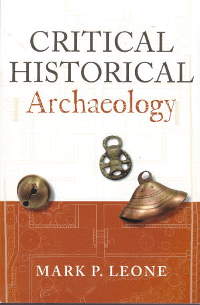 |
Critical Historical Archaeology by Mark P. Leone Left
Coast Press 2010
1st edition paperback
Author
Leone
states his purpose for writing this book almost immediately: “How
can an ordinary scientist,
especially one who wonders how and why subjects get chosen, worked on,
and advanced,
see how changes in a field come about? What governs questions? Where do
the
hypotheses come from that attempt to answer such questions? … an archaeologist and his/her work are not
best seen as a part of the routine intellectual history of the field.
We have
two traditional ways of doing the history of archaeology and thus
relating the
lives of archaeologists to what we do. Both ways are limited, and
addressing
their limitation is my aim.”
Despite its title, the book is an autobiographical treatment of the topic. This might seem strange, but as Leone makes note, this is the best method he has at hand to articulate his ideas about archaeology’s failings. Archaeology, to Leone, especially historical archaeology, fails to adequately describe the past because it tends to ignore the perspective of the involved researchers; their feelings about their topics and their reasons for pursuing them, according to Leone, are biasing the results of their studies. The author insists that archaeology is an activist pursuit—it is, necessary therefore, to use the process of interpreting heritage in order to develop new, and more accurate, understandings of present cultural and political issues.
Leone is one of the leading voices in what is frequently referred to as post-processual or post-modernist archaeology. This development in theoretical perspective sees process-focused, science-centered archaeology as incapable of resolving important social questions such as the role of individuals (agents) or charismatic individuals in social/political shifts within cultures. A lot of the theoretical perspectives generated by this new form of archaeology are rooted in, and analyzed using, the ideas of Karl Marx. A lot of the logic in post-processual, post-modernist archaeology also questions “how we know what we know” about the “facts” we assign to past histories, fully recognizing that researchers have cultural biases that affect their data, their ability to observe and collect those data, and the conclusions drawn from them.
To whit, the author has written a handbook of sorts, about how to “do” archaeology with those new perspectives in mind. He, of course, does this by writing an autobiographical journey through his own research observations… and they make him mad. They made him made when he first observed them, and this passion continues throughout the book. To Leone, archaeology is all about passion as well as facts—divorce one form the other and context is lost. He chooses to best illustrate this through examples that have made him the angriest and through experiences/research/philosophical ideas that he comes to define as “beautiful”.
He takes us to Williamsburg, and shows us how archaeology has given way to politics and capitalism. He looks at how Shaker communities are explained at a museum set up by archaeologists and sees the archaeology twisted into capitalist parable. Leone sees archaeologists as selling out archaeology and skewing interpretation, perhaps unconsciously to make the present seem a logical consequence of the past events they describe. Particular enmity is pointed toward the Mormons, whom Leone believe guilty of creating a “subversive history” created out of a subversive use of genealogy. Archaeologists, notes Leone, need to change consciousness as successfully as universities do.
Part of the skewing of facts, according to Leone has to do with how we choose sites to excavate--- he prefers that sites be chosen by the degree in which the social group who occupied the site was disenfranchised, or continues to be disenfranchised—a decidedly activist stance. The other reason, Leone argues, is through the picking and choosing of theoretical perspectives. Researchers too often “borrow from the available theories to fit the problem [they] are working on.” Leone suggests choosing one, learning everything you can about it, then applying it to the problem as best as is possible. In Leone’s case, he chooses Marx. Marx, states Leone, “created the idea of ideology, not to reconstruct any part of the past, but to understand why workers failed to see their true economic and political condition… that if ideology were analyzed and the true conditions of existence seen, then the resulting consciousness would provoke change.”
What Leone did at Annapolis, he claims, was to show how all of this consciousness-shifting can be achieved . What happened was a swift attempt to shut down Leone’s efforts. The book contains a detailed account of the actions taken by the Maryland Historic Preservations Commission, actions Leone believes were in response to his capitalist critique. Readers can make up their own minds as to the effectiveness of Leone’s treatment of the facts uncovered at Annapolis.
I prefer to quote Leone, and hope that the reader will see this as a very provocative book that needs to be read! It matters little what side of the Marxist fence you are on… Leone provides the reader with powerful leaping-off points for important discussion about archaeological theory and its application in research. The next paragraph, quoted from his chapter entitled “The Ending” speaks for itself:
“Probably the biggest lie I had to deal with as an American historical archaeologist is the way the past and present are seen to be connected. By about 25 years ago, historical archaeology linked artifacts that were lost, or were waste, to people who were too. These were the marginal lower classes, the muted, voiceless people without history: the depraved, ignored, and disenfranchised. Archaeology was a way to recover them. But archaeology did not say that these people were important and that they were still here. Archaeology also never said that the reason they are still here is because the conditions that make them have never gone away. This is the huge lie in historical archaeology: the past is dead. It is not. This lie impoverished the field and made it virtually irrelevant as a form of teaching.” Critical Historical Archaeology is a book worth reading. Order the book direct from the publisher ( $29.95, paperback) by clicking here. reviewed
by Bob
Wishoff
|
 |
Handbook of Postcolonial Archaeology edited by Jane Lydon and Uzma Z. Rizvi Sponsored by the World Archaeological Congress Left
Coast Press 2010 1st
edition Hardback
Any first year anthropology student can tell you about how the discipline’s genesis was centered around colonialist empires (particularly England/Spain/Netherlands) and their desires to rationalize their occupations, and then, to “properly” administer their territories. Many early anthropologists were observing so-called “primitive” communities mostly to provide advice to those who were paying them, and this skewed whatever data they were collecting. Despite whatever good data came out of this kind of work, the perspectives taken, according to post-modernist theorists, tainted the field of archaeology. This excellent text seeks a way forward toward “set of strategies to strip archaeological theory and practice of its colonial heritage and create a discipline sensitive to its inherent inequalities.”
The comparative method, as used in archaeology, was something that was largely abandoned as a more scientific methodology emerged for the discipline. It re-surfaced as a tool in the 1960’s and is considered by many as a particularly valid tool for studies in historical archaeology. The Handbook is a complete synthesis of research, thought and practice on the topic. The articles provide a variety of case study approaches and are meant to illustrate the value of comparative work in understanding the past.
In the volume’s epilogue, the editors write that “(l)ooking beyond our own world areas, and learning from the histories of both peoples and communities and how they have reinterpreted their own pasts, presents a multifaceted lens through which one can learn about collective—and ruptured—pasts.” But this can only be done when one recognizes the subjectivity under which one observes other communities. Also important is to understand that not all voices will be heard, and not all histories will be explored with the same interest or support. These inherent biases need to be recognized and new methodologies need to be developed that will give us the most accurate version of the past we seek to infer from the archaeological record. If you are doing research into any area of historical archaeology, this volume will prove to be an invaluable resource. This volume is part of the World Archaeological Congress Research Handbooks in Archaeology Series. All of the books in this series are available in both hardback and e-book forms! Order them direct from the publisher by clicking here. |
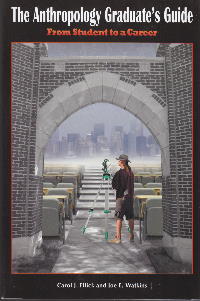 |
The Anthropology Graduate’s Guide From Student to a Career by Carol J. Ellick and Joe E. Watkins Left
Coast Press 2011 1st
edition
paperback
As a recent graduate with a fresh MA in anthropology, I am well aware of the effects of the recent recession. Job prospects in archaeology are not as bright as they once were! So, I was pretty happy to find a new book addressing the topic of launching a career in my field.
Quite simply put, this book offers the new graduate guidance in every imaginable aspect of the task of finding a career position in anthropology-- everything from how to plan the next five years, to sample letters of introduction. The authors present career scenarios in many of the sub-divisions of anthropology, perhaps offering up ideas and pathways that many people might not have considered or have been exposed to until now. Though I harbor some skepticism about the availability of some of the positions noted in this text, this might just be my brain-in-shock at present economic cutbacks. The book is nonetheless a valuable toolbox that has given me some great ideas to pursue—I am confident that you will also find the book useful and worth the $24.95 price. Order it direct from the publisher by clicking here. |
 |
Environmental Disaster and the Archaeology of
Human
Response Environmental disaster! Now there’s a subject that can make the ears of most anyone prick up, especially when it’s discussed in connection with the collapse of civilizations and dire implications for a society’s survival. It has been the pivotal point of literature, political movements and not an inconsiderable number of religions. But it is also the hard and fast fact behind a great deal of archaeology. This volume had its origin in a 1997 SAA symposium on Natural disaster and the Archaeology of Human Response. Most of the original contributors and an extra one to boot have contributed a chapter, and, as per the introduction… “The authors all to one degree or another agreed to address four central considerations whose interrelationship to a large extent determines the nature of response to environmental disruption: 1. The character of the precipitating phenomena, whether natural events such as earthquake, typhoon, volcano, or tidal wave, or human-gnerated technological disasters such as soil salinization, deforestation, or over-fishing. 2. The quality of the environmental events as they directly affect human societies. Thus such issues as the magnitude of the impact, periodicity, speed of onset, duration, aerial extent, and spatial patterning of impacts come into play in determining impact on society as well in delineating their responses. 3. The structure of the affected society. In this regard, the scale of social complexity is important, together with specific, culturally derived organizational configurations. This issue of complexity explores the vulnerability of societal systems to environmentally caused stress. 4. The form of social response to environmental stress. At this stage it is assumed that there is a range of such responses whose specific characteristics are chiefly shaped by the three elements presents above. It is our perception that most prior discussion in this area has focused on the interaction between natural disaster and sociopolitical collapse. While this is certainly one dramatic consequence of environmental stress, we are equally interested in studying those numerous social transformations that do not involve widespread collapse, but have relied on adjustment and innovation in existing economic and sociopolitical structures to maintain viability. This is no small task, but the authors are well up to the task. The chapters cover a number of environmental disasters from throughout the archaeological record. Deforestation and soil erosion in prehistoric Greece as determined by disequilibria in the geoarchaeological and palynological record, geoclimatological disruptions in the southern Arabian peninsula and their interpretation as divine intervention in the historic record, and drought and famine patterns in southern India, southern Asia, and the eastern Mediterranean and western Asia are explored. El Nino and its effects on water intensive agricultural patterns in Peru and Andean culture are given the subject of several studies, and Linda Cordell’s chapter looks at the chaotic effects of its paleoclimatic alteration of precipitation patterns in the American Southwest. The effect of volcanic eruptions on archaeological patterns in Veracruz is one of the few chapters on more purely geological environmental disasters. There is a study of the socioeconomic adaptation to environmental disruptions in Mesoamerica which looks at the resilience of cultures to such broad reaching disruptions. The final chapter addresses why studies such as this are so very relevant to contemporary society. “The science climate community increasingly seeks to influence public policy by alerting societies to impending threats associated with climate predictions. As we do so, I believe that our efforts would benefit from insights provided by those who study the human response to past environmental disruption…The prospect of future environmental disruption associated with anthropogenic climate change makes the topic of this volume timely and important.” Regardless of where one stands on the subject of climate change, Environmental Disaster and the Archaeology of Human Response deserves consideration in the debate and the significance of the topic has actually grown since its publication in 2000. It is available here from the University of New Mexico Press, but it is in low stock, so call first for availability. |
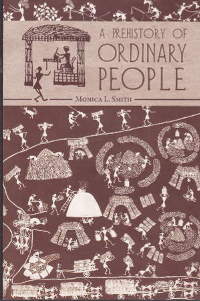 |
A Prehistory of Ordinary People By Monica L. Smith University
of Arizona Press 2010
1st edition paperback
In her preface, author Smith writes that “observations of both archaeological sites and contemporary behavior led me to assess the way in which deliberate decisions, manifested in small and incremental actions, are initiated by specific individuals acting on specific understandings of the world around them. People engage in these selection processes through the investment of limited wherewithal, even under very restricted conditions of consumption and distribution, and even when consumption takes place by proxy through a third party.Social scientists have wrestled with the concept of free will versus social constraint since the inception of philosophy. By identifying the individual as an autonomous cognitive entity, I show how the archaeological record is a cumulative process of individual decision making.”
Each
chapter in this refreshing and
interesting book puts the individual first. Smith looks at the
individual’s
relationships with food, goods, and work. The author also explores
concepts of
multitasking and social complexity as it relates to individuals. Is
society-building a collective, or an individual enterprise? How are
social
“norms” created and perpetuated? Read this book and you will have a
better
understanding of the issues challenging many of today’s archaeologists.
Order
the book ($35.00, paperback) direct from the publisher by clicking here. |
| Home | Gallery | Latest Finds | Back to Main Book Review Index |